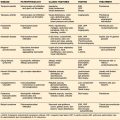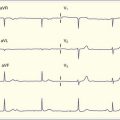138 Mammalian Bites
• Human bites, especially clenched-fist injuries (i.e., “fight bites”) commonly cause septic joints, osteomyelitis, tenosynovitis, and fractures.
• Wound infections caused by human bites are usually polymicrobial.
• Pasteurella species are the most common organisms present in infected wounds from cat and dog bites.
• Injury to deeper structures should be suspected with all mammalian bites, and radiography should be considered to look for fractures, retained foreign bodies, gas in tissues, and osteomyelitis.
Epidemiology
Two to 4 million cat, dog, and human bites are reported by the Centers for Disease Control and Prevention every year, as well as approximately 300,000 emergency department (ED) visits secondary to mammalian bites. The exact number of mammalian bites is difficult to determine because many cases are not reported. Although dog bites outnumber cat bites, 20% to 80% of cat bites become infected, whereas just 3% to 18% of dog bites will become infected.1–4
Pathophysiology
Wound infections from mammalian bites have a complicated microbiology profile. The majority of infections are polymicrobial with a mix of aerobic and anaerobic bacteria. Patients with acute cat bites (<24 hours from the time of the bite) most often have wound cultures that grow Pasteurella organisms, especially Pasteurella multocida. Patients with subacute cat bites (>24 hours) or who return to the ED more than 24 hours after initial treatment of an acute bite typically have cultures that grow mixed aerobic and anaerobic species, with Pasteurella, Staphylococcus, and Streptococcus species being the predominant pathogens. Other pathogens include the aerobe Moraxella and the anaerobes Fusobacterium, Bacteroides, and Porphyromonas.2,3,5,6
Dog bites are the most common mammalian bites seen in the ED. Dog bites tend to cause more damage, injure deeper structures, and crush tissues because of the animal’s powerful jaws, which can exert a pressure of 200 to 450 psi when biting.1 Damage to deeper structures is more common with police dogs.2 Dogs trained specifically for guard duty or for fighting, such as pit bulls, rottweilers, German shepherds, and chows, tend to cause a disproportionate number of bites resulting in serious injury and death.2
Current research reveals that Pasteurella species are the most common organisms present in culture isolates from infected dog bite wounds, most frequently Pasteurella canis.3 Other common aerobic pathogens in infected dog bite wounds include Staphylococcus and Streptococcus species.2,3,5 Aerobes less frequently associated with cat and dog bite wound infections include Moraxella and Neisseria. Causative anaerobic organisms include Fusobacterium, Bacteroides, Porphyromonas, Prevotella, and Capnocytophaga. Capnocytophaga canimorsus causes an opportunistic infection that can result in severe infection and sepsis in immunocompromised patients. Mortality in patients with C. canimorsus infection approaches 30%.3,6
When compared with cat bite victims, patients with dog bites tend to be seen later after injury but have a lower infection rate. Conversely, patients whose injuries become infected secondary to cat bites tend to seek treatment earlier than those with infected dog bite wounds, at a mean time of 12 hours.1 It is speculated that the infection rate is higher because wounds from cats are more likely to be punctures, involve the hand, and become infected with Pasteurella species.1,2
Human bites have long been associated with high rates of infection and complications such as septic joints, osteomyelitis, tenosynovitis, and fractures. However, recent studies show that human bites do not have a higher rate of infection than other bite wounds do.1,2,5
Human bites can be divided into two categories. The first category is referred to as occlusional bites, defined as intentional bites in which the teeth actually close down on the victim’s skin. The second category is referred to as clenched-fist injuries (also called “fight bites”); these bites occur when the teeth hit or puncture the dorsum of the metacarpophalangeal region of a clenched hand. Clenched-fist injuries have a high propensity for causing injury to deep structures of the hand. Open fractures, joint involvement, and tendon injuries are common. Human bites to the hand, especially clenched-fist injuries, are at high risk for infection.2,4,5
Wound infections caused by human bites are usually polymicrobial. Streptococci are present in 60% to 80% of isolates. Staphylococcus aureus is found in 37% to 46% of isolates, and anaerobic species are present in 44% to 60% of isolates, specifically Eikenella corrodens (20% to 25%). Herpes simplex virus can also be transmitted through infected saliva and can cause herpetic whitlow, as well as wound infections (Table 138.1).2
| MAMMALIAN BITE | <24 HOURS | >24 HOURS |
|---|---|---|
| Human |
Presenting Signs and Symptoms
A thorough history should be obtained (Fig. 138.1), including the timing of the bite incident, the circumstances surrounding the bite, and whether a report was filed with animal control officials. If the victim knows the animal, it may be possible to ascertain the immunization status of the bite source and whether the animal is going to be quarantined to observe for signs of rabies. This information is especially important if the bite was unprovoked, if the animal was acting abnormally, or if the bite was caused by a wild animal. The patient’s medical history (including a history of allergies, current medications, and immunization status) should also be obtained.
Differential Diagnosis and Medical Decision Making
![]() Priority Actions
Priority Actions
Important Historical Questions to Ask
Is the bite more or less than 12 hours old?
Are you familiar with the animal or the owner of the animal that bit you?
Was the bite provoked or unprovoked?
Was a report filed with animal control or police?
What is the immunization status of the bite source?
Is the animal being watched or can it be watched for the next 10 days for signs of rabies?
Do you have any other medical problems (especially diabetes, human immunodeficiency virus infection, acquired immunodeficiency syndrome, transplantation history)?
Are you taking any medications such as steroids or immunosuppressive agents?
Are you allergic to any medications?
When was your last tetanus shot? Have you had three doses of tetanus vaccine?
![]() Red Flags
Red Flags
Emergency medical physicians must have a high level of suspicion with mammalian bites.
For clenched-fist injuries, a high index of suspicion should be maintained for tendon injuries, as well as for open fracture and open joints. The metacarpophalangeal joint and extensor tendons are covered by a thin layer of skin when the hand is clenched, and tendons can often retract proximally when the hand is unclenched and the fingers extended.
All bite wounds should undergo high-pressure irrigation of the wound with normal saline, dilute povidone-iodine solution, or poloxamer 188 (Shur-Clens).
Explore all wounds. Extend the margins of deep puncture wounds or small laceration so that all possible injured structures can be visualized if possible injury to deeper structures is suspected.
Treatment
All bite wounds should undergo high-pressure irrigation of the wound with normal saline, dilute (<1%) povidone-iodine solution, or poloxamer 188 (Shur-Clens) (Table 138.2). Recent studies have looked at the efficacy of tap water as an irrigation solution2,7; however, because no conclusive data exist at present for bite wounds, use of tap water as an irrigation solution for bite wounds cannot be supported at this time. Patients with larger or more complicated wounds may need to be anesthetized with lidocaine, bupivacaine, or another anesthetic agent before irrigation and exploration of the wound. Epinephrine should be avoided if the bite involves the fingers, toes, nose, ears, or penis.2
Recent studies show that the infection rate of sutured bite wounds may initially be lower in certain circumstances than historically predicted. Primary closure may be safe for simple bite wounds less than 6 hours old that involve the trunk and extremities (with the exception of the hands and feet) and for simple bite wounds involving the face and neck that are less than 12 hours old.1,2
The emergency physician should leave wounds open or consider closure by secondary intention for all infected wounds and all wounds at increased risk for infection, such as puncture wounds, hand and foot wounds, clenched-fist injuries, full-thickness wounds, wounds requiring débridement, wounds in patients older than 50 years or immunocompromised patients, wounds more than 12 hours old, and wounds involving damage to deep structures such as bones, joints, tendons, nerves, and blood vessels. Extremity wounds should be splinted and elevated.2
Patients who sustain dog, cat, or other animal bites should be evaluated for the potential need for rabies vaccination (see Chapter 179). Patients who sustain high-risk bites in which the animal cannot be quarantined should receive 20 IU/kg of human rabies immunoglobulin (HRIG) injected around the bite site or intramuscularly (or both) and 1 mL of rabies vaccine administered intramuscularly either in the deltoid in adults or in the thigh in children on days 0, 3, 7, 14, and 28. HRIG and rabies vaccine should be injected at separate sites if both are administered intramuscularly.8
Transmission of HIV and hepatitis B and C virus in human bites has been reported.9 Patients who sustain human bites need to be evaluated and counseled about HIV and hepatitis B postexposure prophylaxis (PEP) (PEP for hepatitis C does not exist). HIV PEP should be started as soon as possible within the first 48 to 72 hours after a high-risk bite and continued for 28 days. High-risk bites are those in which the assailant is known to be HIV or hepatitis positive (or both) and bites in which blood exposure is involved. Hepatitis B PEP should include hepatitis B immune globulin (HBIG) and hepatitis B vaccine (HBV) if the patient has not previously been immunized. If the patient had previously received the hepatitis B vaccination series, a titer for anti-HBV should be drawn. If the patient has hepatitis B antibodies, no treatment is needed; if there are insufficient antibodies (anti-HBV < 10 mIU/mL), the patient needs HBIG and an HBV booster.9
Broder J, Jerrard D, Olshaker J, et al. Low risk of infection in selected human bites treated without antibiotics. Am J Emerg Med. 2004;22:10–13.
Eilbert W. Dog, cat and human bites: providing safe and cost-effective treatment in the ED. Emerg Med Pract. 2003;5:1–20.
Griego R, Rosen T, Orengo IF, et al. Dog, cat and human bites: a review. J Am Acad Dermatol. 1995;33:1019–1029.
Oehler R, Velez A, Mizrachi M, et al. Bite-related and septic syndromes caused by cats and dogs. Lancet. 2009;9:439–447.
1 Broder J, Jerrard D, Olshaker J, et al. Low risk of infection in selected human bites treated without antibiotics. Am J Emerg Med. 2004;22:10–13.
2 Eilbert W. Dog, cat and human bites: providing safe and cost-effective treatment in the ED. Emerg. Med Pract. 2003;5:1–20.
3 Talan D, Citron D, Abrahamiam FM, et al. Bacteriologic analysis of infected dog and cat bites. N Engl J Med. 1999;340:85–92.
4 Griego R, Rosen T, Orengo IF, et al. Dog, cat and human bites: a review. J Am Acad Dermatol. 1995;33:1019–1029.
5 Brook I. Microbiology and management of human and animal bite wound infections. Prim Care Clin Office Pract. 2003;30:25–39.
6 Oehler R, Velez A, Mizrachi M, et al. Bite-related and septic syndromes caused by cats and dogs. Lancet. 2009;9:439–447.
7 Bansal BC, Wiebe RA, Perkins SD, et al. Tap water for irrigation of lacerations. Am J Emerg Med. 2002;20:469–472.
8 Centers for Disease Control and Prevention. Human rabies prevention practices—United States. 1999. Available at http://www.cdc.gov/mmwr/preview/mmwrhtml/00056176.htm
9 Centers for Disease Control and Prevention. Antiretroviral postexposure prophylaxis after sexual, injection-drug use, or other nonoccupational exposure to HIV in the United States. 2005. Available at http://www.cdc.gov/mmwr/preview/mmwrhtml/rr5402al.htm





